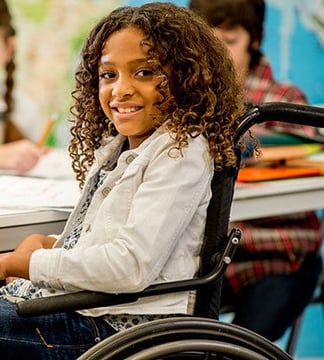Pediatric Neurogenic Bowel
Join Our Movement
What started as an idea has become a national movement. With your support, we can influence policy and inspire lasting change.
Become an Advocate
Children with upper motor neuron bowel diagnosis most often have a spinal cord injury in the cervical (neck) or thoracic (rib cage) area of the spinal cord or a brain injury affecting motor nerves. The nerves are generally hyperactive (spasticity or tone). Lower motor neuron injury occurs in the lumbar (small of the back) or sacral (just above the gluteal fold) in spinal cord injury, spina bifida, or brain injury that affects lower motor neurons. This creates flaccid of nerves and body.
Your child’s healthcare provider will do testing to see if a neurogenic bowel exists. This is typically performed by inserting their small finger into the rectum and checking for reflexes. Electrical testing is sometimes performed.
Treatments include a stimulant such as a suppository and digital stimulation to the internal sphincter for upper neuron issues. Lower motor neuron bowel is treated with manual removal. The healthcare professional will tell you the frequency of the program for your individual child. When performing the bowel program, look at the length of your child’s index finger. That is approximately how far you will need to insert your small finger into the rectum. As your child grows, you will need to adjust to their size.
Although this seems like a very odd thing to do, currently, it is the way the bowel is effectively emptied to avoid overstretching which is necessary to keep the bowel healthy throughout adulthood. Remember, this is normal for your child.
To learn the bowel program process, talk to your child, regardless of age, about what you are doing. Slowly integrate your child into the process so they will be able to transition when developmentally ready. How children learn and progress is an individual experience. Being self-sufficient by school age is a goal if appropriate for your child. Some process the information sooner than others as each child is an individual. Learning to handle accidents is also important as they happen occasionally due to diet, anxiety, stress, all the usual issues.
